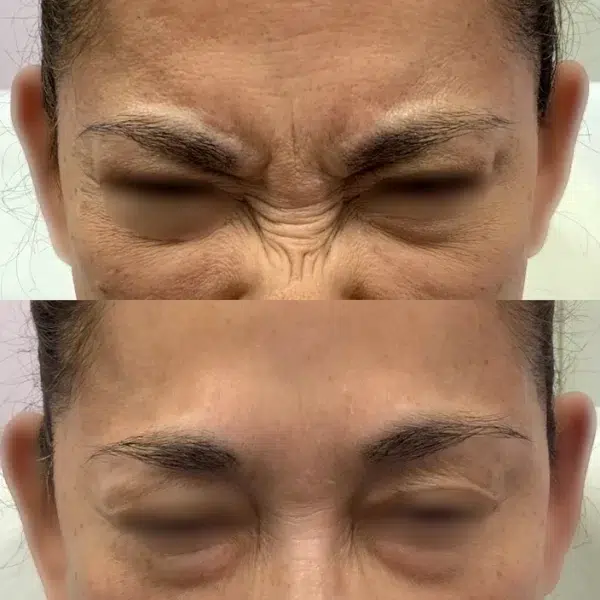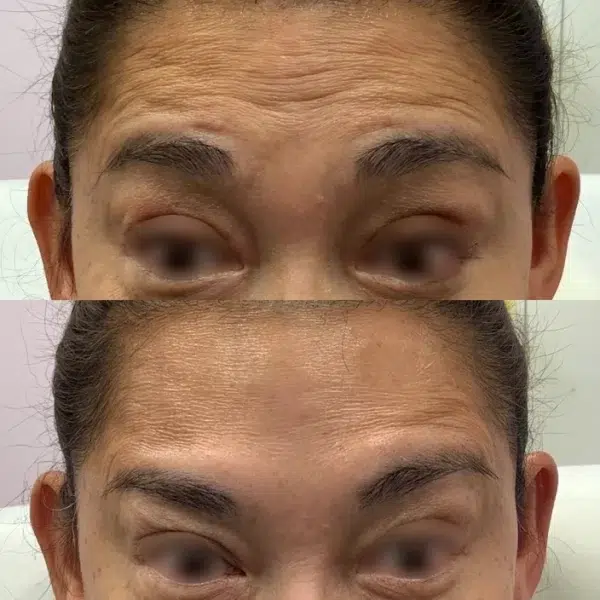Case Study: Botox Treatment for Forehead and Frown Lines
Patient Profile
- Age: Mid-40s
- Main Concerns: Prominent forehead lines, frown lines (glabellar complex), and early signs of static wrinkles.
- Goal: Achieve a smoother, more relaxed appearance while maintaining natural facial expressions.
Treatment Plan
- Neurotoxin Used: Botox® (OnabotulinumtoxinA)
- Areas Treated:
- Forehead (frontalis muscle)
- Glabellar complex (corrugator & procerus muscles)
- Dosage: Adjusted according to patient’s muscle strength and wrinkle depth (standard dosing protocol applied).
Before & After Results
- Forehead:
- Before: Deep horizontal lines visible at rest, accentuated with movement.
- After: Smooth forehead with significantly reduced lines, natural mobility preserved.
- Glabella (Frown Lines):
- Before: Severe vertical lines creating a tired or angry expression.
- After: Lines markedly softened, restoring a fresher and more approachable look.
(See images above: clear reduction in both dynamic and static wrinkles.)
Patient Feedback
The patient reported high satisfaction, noting she looked “more relaxed and refreshed” without appearing “frozen.”
Key Takeaways
- Botox is highly effective in treating dynamic wrinkles when tailored to the patient’s muscle activity.
- Results are visible within 3–7 days, with optimal effect at 2 weeks.
- Longevity: 3–4 months, depending on individual metabolism and muscle activity.

